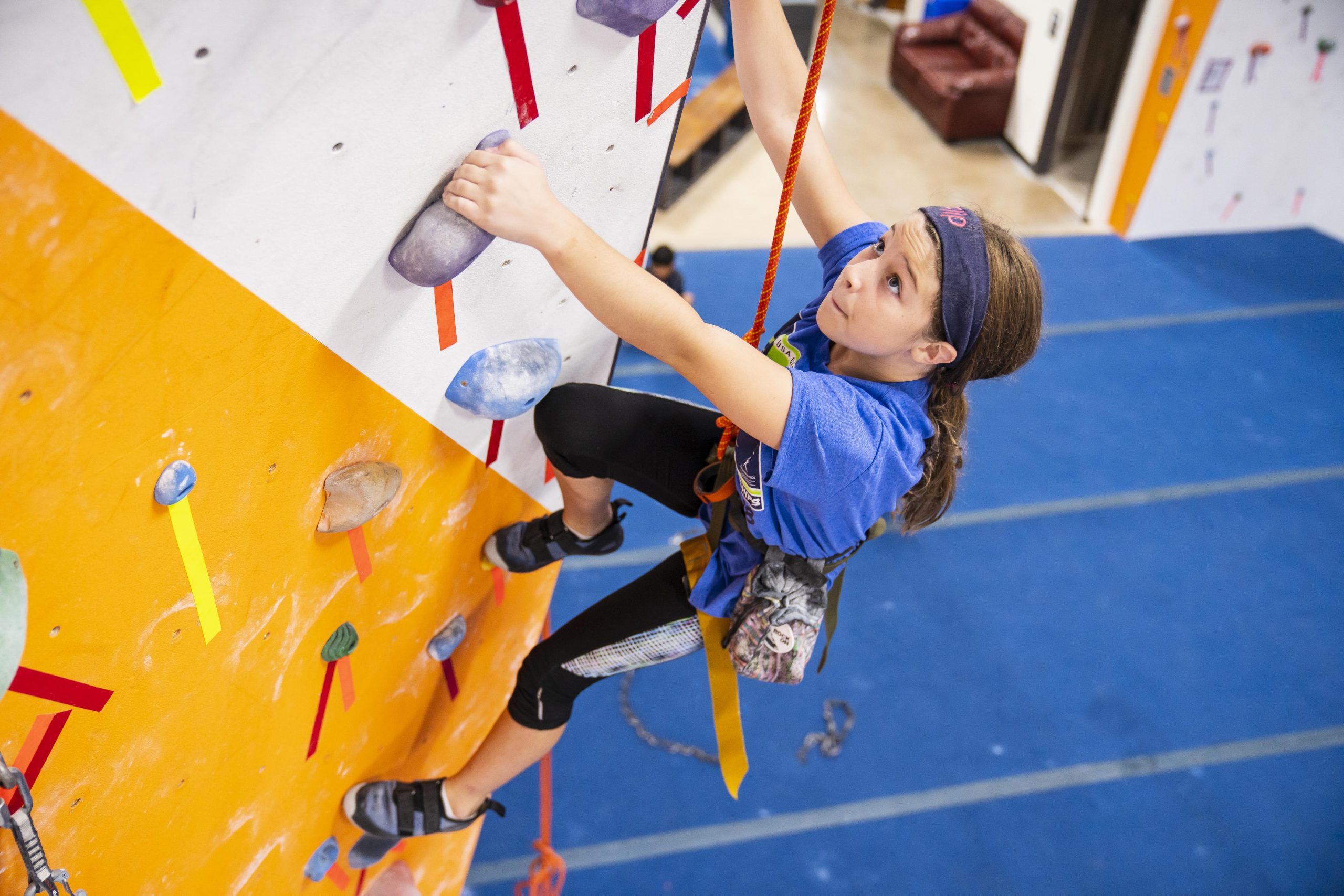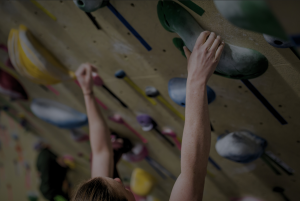How are my 4 steps to improve your kid’s dependency on technology relevant? In the digital age, many of us face that regular and dreaded problem. How do we get kids to turn off their phones, tablets, Xboxes, and TVs and go do something else productive?
As a new parent and a long-time coach, I have had to address this problem. It’s a problem not only with my own son but also with dozens of young athletes of all ages. This includes team trips, practice, and even competitions.
I will walk you through you the approach I’ve refined over the years. I’ve successfully gotten kids to unplug and spend some time in the “real world.”
Before we get into that, however, I find it’s often helpful to see what’s under the hood, so to speak. So, first, let’s look at something that’s making it difficult for kids (and adults, alike) to unplug.
Dopamine - the Motivator
You were taught in school that dopamine is the brain chemical that rewards you for achieving a goal or completing a task.
The idea was that when you finished a difficult homework problem, or successfully landed a new trick on your skateboard, your brain would fire off a little spike of dopamine. This creates a “pleasure” response–as if to say, “There’s a good boy!” like some weird Pavlovian drug dispenser.
The truth, however, is much more subtle and complex, as it turns out. Over the past few decades, scientists have completely revised their understanding of the role of dopamine in the brain. In short, it’s not the reward we get when achieving a goal, rather it’s the chemical that motivates us to pursue those rewards in the first place. Or, as researcher Kevan Lee puts it,
“Dopamine performs its tasks before we obtain rewards, meaning that its real job is to encourage us to act, either to achieve something good or to avoid something bad."
What the research tells us is that dopamine is triggered when we anticipate a tangible reward, providing extra energy and focus to keep working toward that end.
But, in addition, scientists have also found that dopamine also spikes under high-stress situations. This provides us with the motivation to avoid negative outcomes as well.
So, this chemical isn’t really one of the rewards our brain delivers when we get something we want. Rather it provides the motivation to keep trying to get what we want, whether it’s to obtain something good or to avoid something bad.
What Your Kids are Up Against
To start, the companies that make our technologies–from social media to video games to TV–absolutely know about this research. They have a financial incentive to take advantage of this system to keep us plugged in for as long as possible.
That is, after all, how they make their living.
In the case of social media, for instance, dopamine has a double stranglehold on our attention. On the one hand, it motivates us to pursue “positive” rewards. These include likes views, shares, and even gossip, which are all things that make us feel important.
So, we stay logged in. Posting, sharing, watching and anticipating the little rewards that make us feel like valued members of our pack. We feel accepted and protected safely.
On the other hand, it also pushes us to constantly keep an eye out for “negative” consequences. People trash-talking us, unliking our posts, or the most insidious of all-F.O.M.O.
This is the fear that, by ignoring our phones, we will miss out on some exciting once-in-a-blue-moon event or shared experience. A miss that will tarnish our social standing and damage our place in the pack, possibly for good.
Kids And Social Media
Now all of this may begin to seem a bit overdramatic. It may sound too much like the excuses many of us hear from our kids. This is the reason why they can’t possibly put their phones down for a few hours and do something more productive.
And, of course, it is.
To an outsider, like a parent, it’s clear that the world is not going to end if your kid stops checking their social media accounts for a few hours. Their friends will all still be there when they log back on. They can handle a little time off.
I’m sure we’re all said that at least once (probably many more times than that).
And I’m equally sure that it hasn’t really had the effect we were hoping for. The trouble is, of course, that our kid’s brain chemistry is telling them a very different story.
The dopamine system isn’t really concerned with the wisdom or realistic views of human social behavior; it’s concerned with perceived value–good or bad–and the possibility of achieving a reward or avoiding pain.
As long it there is a chance of getting something good or avoiding something bad, it’s going to keep firing until that goal is achieved–or your kid falls asleep in the middle of a post.
Replacing Bad Habits
Well, clearly any reliable approach must take these factors into account. As a veteran of many bad habits (from biting my nails to smoking cigarettes), I’ve found that you cannot simply break one, as we are so often encouraged to do.
Instead, you have to replace it, ideally with a new one that grants the same rewards, with the same level of dependability, but without the negative consequences.
With that in mind, I offer the steps that I have used with the kids I coach, at practice, competitions, and on expeditions, to get them to put down their phones and focus on other things.
Step 1: Turn screens off and put them in a safe place and out of sight.
As simple as this step sounds, for many of us it is, hands down, the hardest part of the process. Now, if you are a parent who has already established a consistent “Phones Off” policy–then congratulations!
You are ahead of the game and you can skip to the next step and read on. But if you are one of the many parents that have had difficulty setting or enforcing such a rule, this step is for you.
Here are a couple of tips to make this step a bit easier.
First, it isn’t strictly necessary to have devices actually turned off, we just want screens to be off.
Some people, adults and kids alike, get anxious if their phones are actually powered down. It causes them to worry about missed calls, rebooting issues, updates causing problems—that sort of thing.
And while these excuses may seem weak, the fact is that any additional anxiety in this process will create unnecessary friction, lowering your chances of success and increasing your chances of a fight.
Second, the more important goal here is to place devices out of sight, and in a safe place.
The distraction of a phone or other portable device doesn’t end with the high-definition screen or constant buzz of vibrating alerts.
Just having the thing on your person is a constant reminder that you may be missing something that your lizard brain thinks is earth-shatteringly important.
Out of sight, out of mind. This does apply in this case, at least to some degree. If your phone is on the other side of the room in your bag or locked safely in your bedroom, it will be far less tempting to sneak a peek.
Third, have a safe place to store devices when your kids are “unplugged”.
As we will see in our final step, the ultimate goal is to create a better set of habits. This is so that unplugging isn’t seen as an unpleasant chore to be done just to satisfy mom or dad. It will be seen as a welcome break from the pressures of digital life and a pleasant way to reconnect with the real world.
There is no better way to undermine this process than for your kid to come back and find that all her worst fears have been realized. Her little brother has dropped her phone in the toilet or the dog has decided to use it as a chew toy. Or worse, dad knocked it off the kitchen table when he was making his lunch.
Step 2: Expect grumpiness.
Especially if you are trying to get them to actually put down the phone. This is a step often missed by parents. I have found it crucial to get reliable buy-in and help the most reluctant kids to commit.
The fact is there are real, physical consequences to tearing ourselves away from our online interactions.
Stopping a highly motivating activity, even one that may have negative consequences (like excessive social media use, for instance) will almost immediately lower the amount of dopamine circulating through your child’s brain.
Some consequences
The consequences of this reduction are easy to guess now that we understand this chemical a little better. Almost by definition, lower dopamine will negatively affect your child’s mood. It will reduce their motivation, not just to do some specific activity, but to do any activity at all.
The purpose of this step (I sometimes call it the Silent Step), is to encourage parents to take a breath during the inevitable protests, excuses, and even outright sneakiness. I’ve had kids literally pretend to put their phones away. But only to clumsily palm them and slip them back into their pockets when they thought I wasn’t looking.
And, of course, the frequently sullen lumps of children that sit on the couch, arms crossed, staring at us with death in their eyes. They want to say out loud, “Ok, I followed your stupid rule. Now what, genius?”
Remember that this apparent defiance, or even rudeness, isn’t necessarily personal. It is a reaction to a sudden physical loss of motivation and an increase in anxiety. And it’s one which kids are rarely consciously aware of, much less prepared to process maturely. After all, if they were, unplugging would likely not be a difficult thing to get them to do.
In my experience, rising to the bait and allowing yourself to be drawn into an argument or worse, a fight, over why, when, or how this process should take place is counterproductive.
I recommend you ignore the dirty looks, and occasional surly comments, and move right to the next step.
Step 3: Replace the activity with one that has similar benefits-quickly.
With the first two steps complete, you’ve got half the battle out of the way. Step Three is where the rubber hits the road; but, with a little forethought and planning, you can increase your odds of success, and even make it painless.
The key to Step Three is to remember that you can never truly break a habit, only replace it. Preferably with something that provides the same benefits as the old one, but with fewer negative consequences.
So, what we are looking for are activities that your child will find interesting. Have a social component (especially important for replacing social media). And are active and fun.
Most importantly they should be activities that your child chooses to do, rather than feeling obligated or forced.
While there are many activities that would fit this bill, I will start with an example of an activity that I use on a regular basis with great success.
Replacing Technology with Climbing
What I have found over the years is that climbing is a marvelous replacement activity for social media, video games, and even TV.
First, climbing is a self-paced, goal-directed physical activity. The combination of these three factors makes it almost uniquely suited to counter the effects of “unplugging” and provide a similar source of motivation.
For instance, climbing requires you to solve puzzles. Unlocking a move or a sequence provides the same sort of motivational boost as you get online.
Second, the self-paced nature of the sport helps lower performance anxiety, allowing kids to solve problems in their own way with less fear of social judgment. This does wonder for motivation.
In addition, the physical nature of climbing provides the same benefits as any physical activity namely the release of endorphins which are well known to help stabilize mood and lower anxiety.
Finally, climbing is also a very social activity, especially in indoor climbing gyms and on youth teams. Climbers tend to be, on the whole, positive and supportive people, ready to cheer on their fellow enthusiasts for achieving their personal goals.
On the whole, I have found that getting my team to put down their phones and get on the wall is a relatively painless task. They get nearly all the same rewards–and considerably less drama–when they climb. Frequently they comment on the relief they feel after getting a few climbs in.
What qualifies as a replacement activity?
Climbing, of course, isn’t the only activity that has these benefits. I have had success with other ideas as well.
The key, as I have mentioned is to choose an option that has the same core benefits as being plugged in, but without the drawbacks.
In my experience an activity that meets most or all of the following criteria will work:
1) It is self-paced, and not driven by a strong social pressure to achieve.
2) It is goal-oriented and has many opportunities to see progress.
3) It has a social component.
4) It’s fun.
Replacement activities
Every child is different, so we are unlikely to find an option that suits every one, every time. Don’t be afraid to experiment with different activities. And of course, involve your child in the decision. This process will go a lot smoother, and work more reliably if you have their buy-in.
We are now ready for the final step, which is the simplest of all.
Step 4: Repeat, repeat, repeat.
Habits are both treacherous and wonderful things.
When attached to negative activities—like excessive screen time—they can cause us damage and pain over and over again, a real-life exposition of the popular definition of insanity.
What happens when we turn a beneficial activity into a habit? The very same mechanisms that keep us “set in our ways” now become a marvelous help. It makes it easier and easier to maintain that activity and causes us to miss it when we don’t get a chance to do it.
So, once you have a good activity, or set of activities, for Step Three, set a regular schedule with your kids and stick to it!
There is no more effective way to build a habit than repetition.
And each time you go through the Three Steps they will, on average, become easier and easier to do. And, if you are lucky, you may even be able to eliminate Step Two!
4 Steps to Improve Your Kid's Dependency on Technology
We now have an understanding of how dopamine works against us when it comes to addictive behaviors surrounding technology. It helps us understand why kids have a hard time unplugging from phones and games.
By taking away the technology and putting it in a safe space, it creates the ‘out of sight and out of mind’ scenario.
And if you expect grumpiness, you’ll be better prepared not to cave in to your kid’s whining and protests.
Once that is addressed, go ahead and find another activity, climbing being a great option, that replaces the dopamine levels from staring at a screen to being physically active and rewarding.
Make it a good habit by repeating this behavior and you will see positive outcomes!
Hint: If you want to set a good example, or perhaps you need a break from your digital overload, these tips can help adults, too. Why not do something together with your kids? Put all your phones away and while disconnecting from technology, you’ll connect more with your family.









